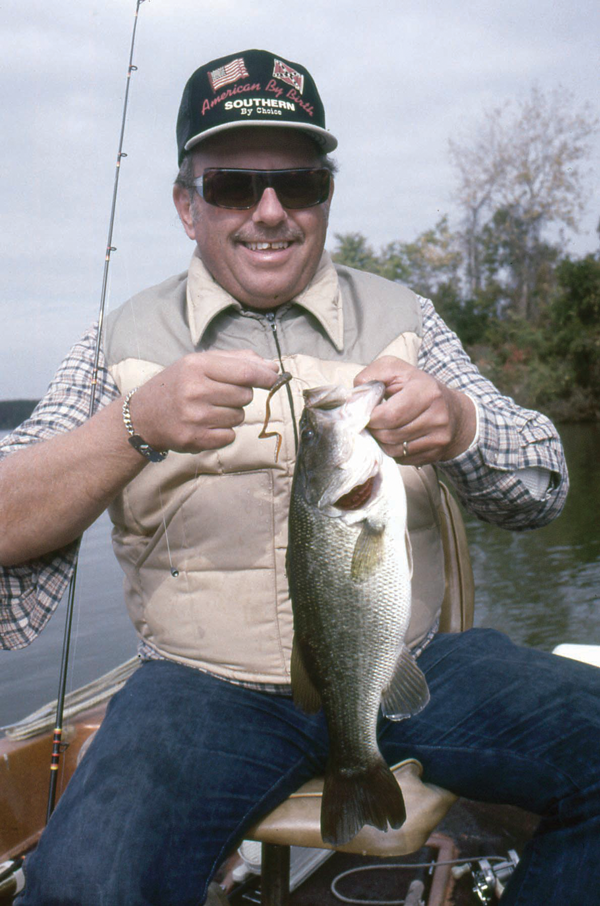There is a very good fishery available to Chesapeake Bay boaters just about 365 days a year, and except for those die-hard bass fishermen, very few others take advantage of this option. Largemouth bass inhabit the upper reaches of the tidal rivers and creeks on both sides of the Bay and behave pretty much like their freshwater cousins found in local ponds. They will attack the same lures and baits and they hang out around the same type of structure, but unlike those pond bass, the tidal river bass seem to be a bit feistier.

If you cruise the Bay in a 50-foot trawler, you won’t be able to reach the better bass fishing locations, but those of us with trailer boats can take full advantage of this fishery. The bass will move down the Bay in the winter and spring when the rain has pushed freshwater further south. In the summer, if we ever have another dry summer, the salt wedge will push the bass further north.
I covered a B.A.S.S. Tournament out of the Gunpowder River several years ago, and one angler had pre-fished the area in the spring. By tournament time it was late summer, and he fished the same location where he had caught bass and ended up with a bluefish. Not knowing exactly what he had, he picked the blue up by sticking his thumb in its mouth. Fortunately, it was small bluefish so stitches were not required. That tournament was won by an angler who fished right off of Turkey Point in the Elk River.
Since the same number of bass inhabit the rivers in the spring and the summer, when they move up the rivers, they can be quite concentrated and fishing will be good. As the freshwater returns, they will spread out again.
Nothing beats local knowledge when it comes to fishing for tidal bass. I have fished the Nanticoke River with my brother-in-law Paul Coffin who lives in Seaford and fishes there on a regular basis. He knows where the underwater structure lies, and this is a major advantage when it comes to finding bass. He also knows what type of bait the bass are likely to be on depending on the season.
The other critical concern when fishing our tidal creeks and rivers is, of course, the tide. Most experienced bass fishermen will say a falling tide is the best time to fish as the bass and the bait will be moving away from the cover along the bank and out of the feeder streams and into the main river. Here again, local knowledge is a big help. For instance, knowing where a submerged tree lies in relation to a feeder creek where a bass can lie in wait for bait to swim by in the dropping tide is a big advantage.
Getting back to that B.A.S.S. Tournament, I was on Mark Davis’s boat as he ran almost to Millington up the Chester River. He fished around blown down trees and hooked a nice bass, but it got hung up on the tree branches. Mark, who is by no means a small man, was able to climb along the trunk, free the bass and get back in the boat. I was impressed.
Mark knew he had to move pretty far up the river to make up for the salt wedge that was pushing the bass away from the Bay. I thought that was pretty good for a guy from Arkansas.
Just about any bass lure will work on tidal bass. I like crank baits, but my brother-in-law Paul uses jigs. If you are sure the fish are feeding on shad or bunker, then go with crankbaits. Otherwise, experiment with everything until you find out what they like.
The hardcore bass guys will start the day with a half dozen rods and reels rigged with a half dozen different lures. I may have two outfits, one with a crankbait and one with a jig. I am not above using live minnows or nightcrawlers.
Access to most of the tidal bass fishing rivers is very good. There is a boat ramp in Seaford for the Nanticoke River and one in Laurel for Broad Creek. The ramp at Phillips Landing provides access to both bodies of water. The Ramp at Federalsburg is in on Marshyhope Creek.
There is also some good bass fishing in sight of Washington, DC. Ramps at Colchester on the Occoquan River and on Dogue Creek near Fort Belvoir provide good access to the Potomac River and all the various coves and creeks.
By Eric Burnley